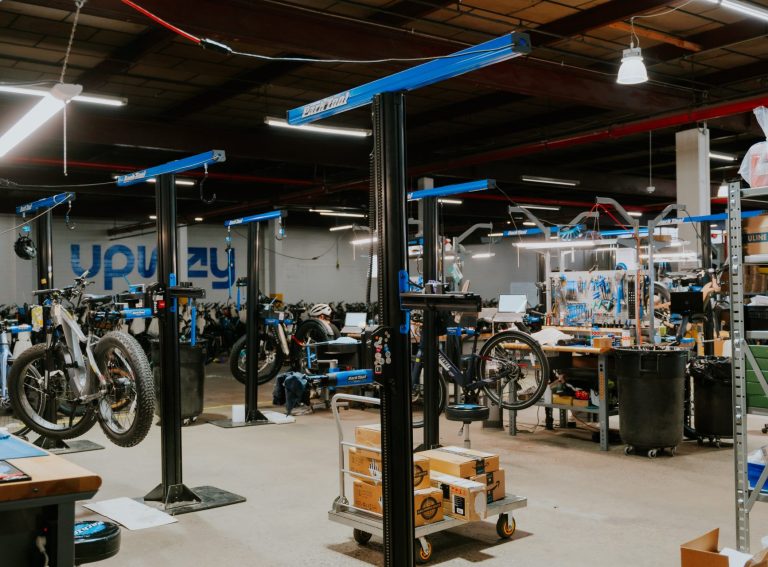Last night, industry leaders gathered in London to find the sweet spot for micromobility regulation in Europe.
The exclusive mobility-focused event, organised by micromobility giant Bolt and Zag Daily, took place in Old Street and opened with a Keynote from Bolt’s Head of Public Policy Haya Verwoord Douidri.
A panel of five mobility leaders then dissected the various components of shared micromobility regulation. Amongst those are: how shared micromobility should be financed, the use of fleet caps, and what KPIs should look like.
“Regulation can make or break our sector,” Haya told the panel. “Micromobility is a very highly regulated sector where the regulations truly shape, like no other industry I’ve ever seen, the economics of your business and your ability to offer your services in cities.”
Revenue “shares” or revenue “grabs”
One question presented to the panel was how shared micromobility should be financed.
Profitability is a key concern for the industry and whether a shared micromobility scheme is subsidised, paying fixed fees, or giving a share of its revenue to cities plays a huge role.
Tom Hardie, the UK Department for Transport’s Head of E-scooter Trials, told the panel that revenue share is often what helps get shared micromobility schemes over the line with local authorities.
“There’s often not a lot of political buy-in for change,” Tom told the panel. “E-scooters are relatively new and a difficult landscape exists for the time being. But if you go to a council office or local authority that wants to make a change, and you tell them that you have a solution to help meet their climate goals – and it also pays money – then the second part of that sentence is likely what will catch their interest.”
Rather than revenue share, Urban Sharing’s Chief Revenue Officer Tom Nutley gave his take on what he calls “revenue grabs”.
“We all have national climate goals and we have this fantastic mode of sustainable transport that can help meet them. But what you also need is an envelope of cash for it to go forward.”
Tom believes that revenue share is a condition of the industry dating back to when early micromobility players were finally awarded public-private partnerships and then offered their services for free, which has led to a knock-on effect for the entire industry.
“Councils and governments are not there to be revenue-generated. They’re not there to make loads of cash. What are they doing with the revenue that they’re asking for?
“You need to have that level of visibility. If you want visibility of what the operators are doing, then you need to give visibility on what you’re doing as an authority.”
Bolt’s Public Policy Director Haya Verwoord Douidri echoed the belief that the historical landscape of shared micromobility has contributed to how it’s financed today. She highlighted that the industry has moved from subsidised bike share schemes, to venture capital funding, to now revenue share which has fostered competition between operators.
“This is why revenue share can be very dangerous if it becomes a criteria in selecting operators,” Haya told the panel. “It becomes more about who has the deeper pockets.”
POLIS Network’s Secretary General Karen Vancluysen believes in subsidising shared micromobility schemes that help reach public policy goals, especially if they’re cheaper than cities setting up their own public bike share systems. “If these systems enhance access, inclusion, and extend the portfolio of sustainable alternatives which we need to get people out of their cars, then why not subsidise them?”
Fixed fleet caps vs dynamic fleet caps
This summer Deloitte published a report commissioned by Bolt which recommended that, rather than hard fleet caps, dynamic fleet caps could be implemented based on performance metrics such as the average number of daily trips per vehicle.
The report, which analysed 155 European cities, broke regulatory models down into three categories: light, medium and high. Light Regulation is open markets with unlimited operators and unrestricted fleet sizes. Medium Regulation consists of authorisation regimes where e-scooter operators need to obtain a permit from the city. High Regulation involves tenders where e-scooter operators must submit competitive proposals which include their offering on fleet size, service quality, pricing structure, fees structure, and more.
A key finding of the report was that flexible e-scooter regulations resulted in more affordable pricing and higher adoption for consumers.
Zooming in on fleet caps, Deloitte’s Senior Director for Government and Public Services Stijn Vandeweyer recalled how dynamic fleet caps are successfully being used in the Belgian city of Antwerp.
In Antwerp, which Stijn said hosts 1000+ e-scooters for its population of 500,000, if each e-scooter has more than three or four trips per day, more scooters can be added to the street. If each e-scooter sees less than 0.5 trips per day, then scooters are removed from the street to match the decreased demand.
“It works well because the city then sees e-scooters as an additional, cheap, sustainable mode of transport on top of its public transport investment and its shared e-bike system,” Stijn told the panel. “You need dynamic caps to make the system sustainable, not only for the comfort of users, but also for the affordability of operators and their business models.”
Haya also flagged how fixed fleet caps have contributed to a global stagnation of demand.
“What you’re seeing is cities that could have 10,000 or 20,000 scooters are capping it to have, say, only 1,000 scooters.
“Despite scooters being used 3-4 times daily, cities are sometimes reluctant to expand the fleet limiting an operators’ ability to fully serve the city. Artificially limiting scooter supply is hindering mode shift – supply should rise to meet demand, not be held back.”
Haya further highlighted how fixed fleet caps can be incompatible with other requirements, such as the maximum number of metres someone would need to walk to find an e-scooter. “I recall one example where it was actually impossible. There was no way to service the full city with the number of vehicles they’d asked for, and also not have someone walk more than a certain number of metres to find a vehicle. It was contradictory.”
Shaping KPIs
Tom Nutley told the panel that every KPI must be solving a root cause and serve the end user.
“Ultimately, we need to remember that we’re providing this service to give end users a good experience and to make sure we get that modal shift,” he told the panel.
Using the example of an availability metric, Tom questioned the efficiency of strictly requiring an even spread of scooters across a city. “What if 80% of them aren’t being used during peak times because they’re not where they needed to be?
“That has a knock on effect on supply and demand. Our ridership goes down and we’re chucked out the city.”
Haya added that fines imposed on operators for not meeting their KPIs are often unproportional. “This is what worries me about KPIs. I’ve seen cities say you have to deploy 1,000 scooters and if you deploy, say, six more then we’re going to fine you and the fine is x amount per scooter.”
Recognising the importance that compliance has on mitigating negative externalities, operating efficiently and encouraging investment, Haya said that if it’s taken to the extreme it risks becoming a “tick box exercise” for operators.
Karen flagged that cities should not forget that the negative externalities of shared micromobility is often a result of the unfair allocation of space to favour cars.
“The major regulator of shared micromobility is space,” Karen said. “The car is still taking up way too much space. If you have an increasing portfolio of light mobility modes that all have to fit into one bike lane – if there is a bike lane in the first place – then obviously it will lead to challenges.
“Cities have to take responsibility for the reallocation of space and if they do this I think it could be a real gamechanger.”
The general consensus concluding the panel was that rather than working towards a “sweet spot”, perhaps a “sliding scale” of KPIs and metrics which are uniquely tailored to serve the stakeholders involved in each shared system is more appropriate.
The purpose of this event was not to try and prescribe every aspect of the regulatory process, but to push it in the right direction and find common ground to move this industry forward.




